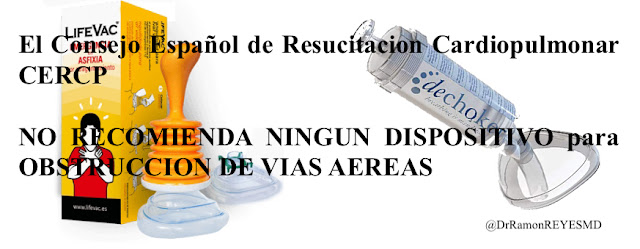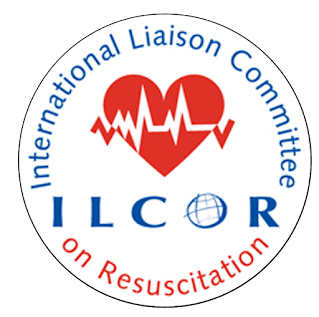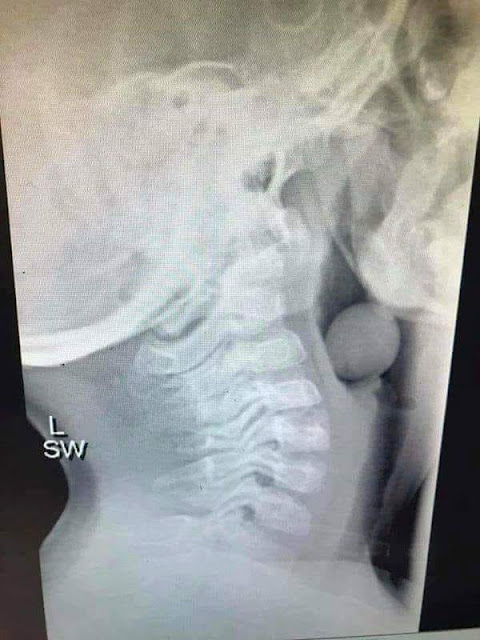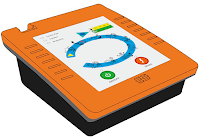Conflict of Interest Declaration
The ILCOR Continuous Evidence Evaluation process is guided by a rigorous ILCOR Conflict of Interest policy. The following Task Force members and other authors were recused from the discussion as they declared a conflict of interest: none applicable
The following Task Force members and other authors declared an intellectual conflict of interest and this was acknowledged and managed by the Task Force Chairs and Conflict of Interest committees: none applicable
CoSTR Citation
Couper K, Abu Hassan A, Ohri V, Patterson E, Tang HT, Bingham B, Perkins GD, Avis S, Brooks S, Castren M, Chung C, Considine J, Kudenchuck P, Nishiyama C, Ristagno G, Semeraro F, Smith C, Smyth M Morley P, Olasveengen TM - on behalf of the International Liaison Committee on Resuscitation Basic and Paediatric Life Support Task Forces. Foreign body airway obstruction in Adults and Children Consensus on Science with Treatment Recommendations [Internet] Brussels, Belgium: International Liaison Committee on Resuscitation (ILCOR) Basic Life Support Task Force, 2020 Jan 1. Available from: http://ilcor.org
Methodological Preamble
The continuous evidence evaluation process for the production of Consensus on Science with Treatment Recommendations (CoSTR) started with a systematic review of basic life support (Couper, 2019, PROSPERO 2019 CRD42019154784) conducted by Keith Couper and Gavin Perkins with involvement of clinical content experts. Evidence for adult and paediatric literature was sought and considered by the Basic Life Support Adult Task Force and the Pediatric Task Force groups respectively. These data were taken into account when formulating the Treatment Recommendations.
PICOST
The PICOST (Population, Intervention, Comparator, Outcome, Study Designs and Timeframe)
Population: Adults and children with foreign body airway obstruction in any setting.
Intervention: Interventions to remove foreign body airway obstruction, such as finger sweep, back slaps, abdominal thrusts, chest thrusts, and suction-based airway clearance devices.
Comparators: No action.
Outcomes: Survival with good neurological outcome, survival, return of spontaneous circulation, relief of airway obstruction, harms/ complications.
Study Designs: Randomized controlled trials (RCTs) and non-randomized studies (non-randomized controlled trials, interrupted time series, controlled before-and-after studies, cohort studies), case series (≥5 cases) are eligible for inclusion. Case reports of injuries/ complications will be eligible.
Timeframe: All years and all languages were included as long as there was an English abstract. Unpublished studies (e.g., conference abstracts, trial protocols), animal studies, manikin studies, cadaver studies were excluded. Literature searched to September, 2019.
PROSPERO Registration CRD42019154784
In most cases bias was assessed per comparison rather than per outcome, since there were no meaningful differences in bias across outcomes. In cases where differences in risk of bias existed between outcomes this was noted.
Consensus on Science
Back blows
For the critical outcome of survival (n=1 study, Vilke 2004 196), important outcome of relief of foreign body airway obstruction (FBAO) (n=3 studies, Igarashi 2017 1396; Redding 1979 475; Vilke 2004 196) and important outcome of injuries/ complications (n=4 studies, Guinane 2018 1272; Nowitz 1998 129; Patterson 1993 741; Rakotoharinrasana 2003 43), we identified only observational studies. The overall quality of evidence was rated as very low for all outcomes primarily due to a very serious risk of bias. The individual studies were all at very serious risk of bias due to confounding. Because of this and a high degree of heterogeneity, no meta-analyses could be performed and individual studies are difficult to interpret.
For the critical outcome of survival, we identified very-low-certainty of evidence downgraded for very serious risk of bias and serious indirectness from one case series study (Vilke 2004 196) which reported survival in 13 patients treated with back blows.
For the important outcome of relief of FBAO, we identified very-low-certainty of evidence downgraded for very serious risk of bias and serious indirectness from three case series studies (Igarashi 2017 1396; Redding 1979 475; Vilke 2004 196) which reported relief of FBAO in 75 patients treated with back blows.
For the important outcome of injuries/ complications, we identified very low certainty evidence downgraded for very serious risk of bias from four studies (Guinane 2018 1272; Nowitz 1998 129; Patterson 1993 741; Rakotoharinrasana 2003 43) that reported four case reports of injuries/ complications in patients treated with back blows.
Abdominal thrusts
For the critical outcome of survival (n=2 studies, Boussuges 1985 733; Heimlich 1975 398), important outcome of relief of foreign body airway obstruction (FBAO) (n=6, Boussuges 1985 733; Heimlich 1975 398; Igarashi 2017 1396; Redding 1979 475; Soroudi 2007 25; Vilke 2004 196) and important outcome of injuries/ complications (n=49, Agia 1979 473; Ayerdi 2002 154; Bintz 1996 159; Bouayed 2015 427320; Caro Aguilera 2008 533; Cecchetto 2011 169; Chao 2012 e7; Chapman 1983 446; Chillag 2010 147; Cowan 1987 121; Croom 1983 2602; Desai 2008 1325; Dupre 1993 611; Entel 1996 251; Fearing 2002 978; Feeney 2007 252; Fink 1989 486;Haynes 1984 507; Herman 2018 e13; Kirshner 1985 594; Koss 2018 E1; Kosser 2009 1089; Lee 2019 210; Lee 2009 E34; Lette 1990 512; Lin 2003 380; Mack 2002 130; Majumdar 1998 609; Martin 2007 1146; Matharoo 2013 502; Meredith 1986 106; Nowitz 1998 129; Olenchock 2004 302; Otero Palleiro 2007 825; Passik 1987 469; Rakotoharinrasana 2003 43; Razaboni 1986 95; Roehm 1983 1186; Sams 1989 980; Skulberg 1992 91; Tashtoush 2015 275497; Truong 2018 48; Tung 2001 109; Ujjin 1984 175; Ulger 2016 15; Valero 1986 105; Van der Ham 1990 713; Visintine 1975 415; Wolf 2001 65-67), we identified only observational studies. The overall quality of evidence was rated as very low for all outcomes primarily due to a very serious risk of bias. The individual studies were all at very serious risk of bias due to confounding. Because of this and a high degree of heterogeneity, no meta-analyses could be performed and individual studies are difficult to interpret.
For the critical outcome of survival, we identified very low certainty of evidence downgraded for very serious risk of bias from two case series studies (Boussuges 1985 733; Heimlich 1975 398) which reported survival in 189 patients treated with abdominal thrusts.
For the important outcome of relief of FBAO, we identified very low certainty of evidence downgraded for very serious risk of bias from six case series studies (Boussuges 1985 733; Heimlich 1975 398; Igarashi 2017 1396; Redding 1979 475; Soroudi 2007 25; Vilke 2004 196) which reported relief of FBAO in 417 patients treated with abdominal thrusts.
For the important outcome of injuries/ complications, we identified very low certainty evidence downgraded for very serious risk of bias from 49 studies (Agia 1979 473; Ayerdi 2002 154; Bintz 1996 159; Bouayed 2015 427320; Caro Aguilera 2008 533; Cecchetto 2011 169; Chao 2012 e7; Chapman 1983 446; Chillag 2010 147; Cowan 1987 121; Croom 1983 2602; Desai 2008 1325; Dupre 1993 611; Entel 1996 251; Fearing 2002 978; Feeney 2007 252; Fink 1989 486;Haynes 1984 507; Herman 2018 e13; Kirshner 1985 594; Koss 2018 E1; Kosser 2009 1089; Lee 2019 210; Lee 2009 E34; Lette 1990 512; Lin 2003 380; Mack 2002 130; Majumdar 1998 609; Martin 2007 1146; Matharoo 2013 502; Meredith 1986 106; Nowitz 1998 129; Olenchock 2004 302; Otero Palleiro 2007 825; Passik 1987 469; Rakotoharinrasana 2003 43; Razaboni 1986 95; Roehm 1983 1186; Sams 1989 980; Skulberg 1992 91; Tashtoush 2015 275497; Truong 2018 48; Tung 2001 109; Ujjin 1984 175; Ulger 2016 15; Valero 1986 105; Van der Ham 1990 713; Visintine 1975 415; Wolf 2001 65-67) that reported 52 case reports of injuries/ complications in patients treated with abdominal thrusts.
Chest thrusts/ compressions
For the critical outcome of survival with favorable neurological outcome (n=1 study, Kinoshita 2015 63), important outcome of relief of foreign body airway obstruction (FBAO) (n=1 study, Redding 1979 475) and important outcome of injuries/ complications (n=4 studies, Guinane 2018 1272; Mack 2002 130; Skulberg 1992 91; Tung 2001 109), we identified only observational studies. The overall quality of evidence was rated as very low for all outcomes primarily due to a very serious risk of bias. The individual studies were all at very serious risk of bias due to confounding. Because of this and a high degree of heterogeneity, no meta-analyses could be performed and individual studies are difficult to interpret.
For the critical outcome of survival with favorable neurological outcome, we identified very low certainty evidence downgraded for very serious risk of bias and very serious imprecision from one observational study (Kinoshita 2015 63) enrolling 138 FBAO patients (P), which showed benefit from the use of the intervention (I) compared with control (C) (odds ratio 10.60, 95% CI 2.47-65.06; 501 more patients/1000 survived with the intervention, 95% CI 221 more patients/1000 to 623 more patients/ 1000 survived with the intervention).
For the important outcome of relief of FBAO, we identified very low certainty of evidence downgraded for very serious risk of bias from one case series study (Redding 1979 475) which reported relief of FBAO in 28 patients treated with chest thrusts/ compressions.
For the important outcome of injuries/ complications, we identified very low certainty evidence downgraded for very serious risk of bias from four studies (Guinane 2018 1272; Mack 2002 130; Skulberg 1992 91; Tung 2001 109) that reported five case reports of injuries/ complications in patients treated with chest thrusts/ compressions.
Finger sweep
For the critical outcome of survival (n=1 study, Vilke 2004 196), important outcome of relief of foreign body airway obstruction (FBAO) (n=2 studies, Redding 1979 475; Vilke 2004 196) and important outcome of injuries/ complications (n=8 studies, Abder-Rahman 2009 273; Gjoni 2009 595; Hartrey 1995 52; Heimlich 1977 11; Kabbani 1995 495; Mori 2016 bcr2016216536; Sridharan 2016 33; Vunda 2012 353), we identified only observational studies. The overall quality of evidence was rated as very low for all outcomes primarily due to a very serious risk of bias. The individual studies were all at very serious risk of bias due to confounding. Because of this and a high degree of heterogeneity, no meta-analyses could be performed and individual studies are difficult to interpret.
For the critical outcome of survival, we identified very low certainty of evidence downgraded for very serious risk of bias and serious indirectness from one case series study (Vilke 2004 196) which reported survival in six patients treated with finger sweep.
For the important outcome of relief of FBAO, we identified very low certainty of evidence downgraded for very serious risk of bias and serious indirectness from two case series studies (Redding 1979 475; Vilke 2004 196) which reported relief of FBAO in 36 patients treated with finger sweep.
For the important outcome of injuries/ complications, we identified very low certainty evidence downgraded for very serious risk of bias from eight studies (Abder-Rahman 2009 273; Gjoni 2009 595; Hartrey 1995 52; Heimlich 1977 11; Kabbani 1995 495; Mori 2016 bcr2016216536; Sridharan 2016 33; Vunda 2012 353) that reported 10 case reports of injuries/ complications in patients treated with blind finger sweeps.
Magill forceps
For the critical outcome of survival with favorable neurological outcome (n=1 study, Sakai 2014 53), critical outcome of survival (n=1 study, Sakai 2014 53), and important outcome of relief of foreign body airway obstruction (FBAO) (n=4 studies, Igarashi 2017 1396; Rouillon 2006 1949; Sakai 2014 53; Soroudi 2007 25), we identified only observational studies. The overall quality of evidence was rated as very low for all outcomes primarily due to a very serious risk of bias. The individual studies were all at very serious risk of bias due to confounding. Because of this and a high degree of heterogeneity, no meta-analyses could be performed and individual studies are difficult to interpret.
For the critical outcome of survival with favorable neurological outcome, we identified very low certainty evidence downgraded for very serious risk of bias, serious indirectness and serious imprecision from one observational study (Sakai 2014 53) enrolling 240 FBAO patients (P), which showed benefit from the use of the intervention (I) compared with control (C) (odds ratio 3.96, 95% CI 1.21-13.00; 107 more patients/1000 survived with the intervention, 95% CI 8 more patients/1000 to 324 more patients/ 1000 survived with the intervention).
For the critical outcome of survival, we identified very low certainty evidence downgraded for very serious risk of bias, serious indirectness and serious imprecision from one observational study (Sakai 2014 53) enrolling 240 FBAO patients (P), which showed no benefit from the use of the intervention (I) compared with control (C) (intervention 26.7% v control 17.0%, p=0.086).
For the important outcome of relief of FBAO, we identified very low certainty of evidence downgraded for very serious risk of bias from four case series studies (Igarashi 2017 1396; Rouillon 2006 1949; Sakai 2014 53; Soroudi 2007 25) which reported relief of FBAO in 417 patients treated with magill forceps.
Suction-based airway clearance devices
For the critical outcome of survival (n=1 study, Saperstein 2018), and important outcome of relief of foreign body airway obstruction (FBAO) (n=1 study, Saperstein 2018), we identified only observational studies. The overall quality of evidence was rated as very low for all outcomes primarily due to a very serious risk of bias. The individual studies were all at very serious risk of bias due to confounding. Because of this and a high degree of heterogeneity, no meta-analyses could be performed and individual studies are difficult to interpret.
For the critical outcome of survival, we identified very low certainty of evidence downgraded for very serious risk of bias from one case series study (Saperstein 2018) which survival in 10 patients treated with a suction-based airway clearance device.
For the important outcome of relief of FBAO, we identified very low certainty of evidence downgraded for very serious risk of bias from one case series study (Saperstein 2018) which reported relief of FBAO in 10 patients treated with a suction-based airway clearance device.
FBAO removal by bystanders
For the critical outcomes of survival with favorable neurological outcome (N=1, Igarashi 2017 1396), we only identified a single observational study. The overall certainty of evidence was rated as very low due to a very serious risk of bias. With the identification of only one study, no meta-analyses were performed.
For the critical outcome of survival with good neurological outcome, we identified very low certainty evidence downgraded for very serious risk of bias from one observational study (Igarashi 2017 1396) enrolling 41 patients with FBAO (P) which showed benefit from the intervention (I) compared with no intervention (C) (intervention 73.7% v control 31.8%, p=0.0075).
Treatment Recommendations
We suggest that back slaps are used initially in patients with a FBAO and an ineffective cough (weak recommendation, very low certainty of evidence).
We suggest that abdominal thrusts are used in adults and children with a FBAO and an ineffective cough where back slaps are ineffective (weak recommendation, very low certainty of evidence).
We suggest that rescuers consider the manual extraction of visible items in the mouth (weak recommendation, very low certainty of evidence).
We suggest against the use of blind finger sweeps in patients with a FBAO (weak recommendation, very low certainty of evidence).
We suggest that appropriately skilled individuals consider the use of Magill forceps to remove FBAO in OHCA patients with a FBAO (weak recommendation, very low certainty of evidence).
We suggest that chest thrusts are used in unconscious patients with a FBAO (weak recommendation, very low certainty of evidence).
We suggest that bystanders undertake interventions to support FBAO removal as soon as possible after recognition (weak recommendation, very low certainty of evidence).
Justification and Evidence to Decision Framework Highlights
The task force recognises the importance of early removal of FBAO in order to prevent cardiac arrest.
Bystanders should be encouraged to support patients with FBAO to rapidly remove the obstruction.
The initial response to foreign body airway obstruction in a conscious individual should be to encourage coughing as this is a normal physiological response that may be effective and is unlikely to cause harm. The sequence of interventions in individuals without an effective cough suggested in treatment recommendations seeks to balance the benefits of early removal of the FBAO with the potential harms of interventions, such as abdominal thrusts.
We prioritised consistency with current treatment recommendations. We note the difference in methodological approaches used in this review, compared with previous reviews. In particular, previous reviews included cadaver, animal, and manikin studies.
We note that evidence for all outcomes is assessed as being of very low certainty. Research on FBAO is challenging as many FBAO are treated immediately and effectively by bystanders or by coughing. It is unlikely to be possible to undertake a randomised controlled trial in the area of FBAO.
The task force distinguished between the situation where a FBAO can be visualised in the mouth and the situation where no object can be visualised. Where an obstruction can be visualised in the mouth, the manual removal of the item was considered appropriate. Where an item could not be visualised in the mouth, the potential harm to the casualty associated with the rescuer placing and moving their fingers in the casualty’s mouth (a blind finger sweep) and lack of clear benefit to this approach led to a suggestion against the use of blind finger sweeps.
The task force treatment recommendation limits use of abdominal thrusts to adults and children. This was driven by concerns that in infants the limited protection of the upper abdominal organs by the lower ribs may mean that the harm of abdominal thrusts outweighs any potential benefit. This is consistent with previous treatment recommendations.
The task force treatment recommendation supporting the use of chest thrusts/ compressions is based on evidence from case series of successful relief of FBAO (unknown whether patients in cardiac arrest) and an observational study that found that chest compressions improved neurologically intact survival in unresponsive patients with FBAO. Our current recommendation is consistent with previous treatment recommendations.
The introduction of a treatment recommendation supporting the use of magill forceps by suitably trained individuals reflects the potential benefit of the intervention and the availability of relevant equipment to trained individuals. The task force expects that these trained individuals will already be skilled in advanced airway management. The treatment recommendation is based on evidence from case series of successful relief of FBAO (unknown whether patients in cardiac arrest) and an observational study that found magill forceps use was associated with improved neurologically intact survival in OHCA patients.
The task force acknowledges that there are some data from a case series demonstrating the efficacy of suction-based airway clearance devices. We felt that these data were insufficient to support the implementation of a new technology with an associated financial cost. We noted that the limited number of cases is likely insufficient to provide preliminary data on harm. On this basis, the task force felt that there was insufficient evidence to make a treatment recommendation in relation to these devices. The task force has outlined recommendations for further research in relation to these devices.
Knowledge Gaps
There is a need for high-quality observational studies that accurately describe the incidence of FBAO, patient demographics (age, setting, comorbidities, food type, conscious level), full range of interventions delivered, who delivered interventions (health professional/ lay responder), success rates of interventions, harm of interventions, and outcomes. It is unlikely that such a study can be conducted using only health service data.
There is a need for further evidence on the benefits and harms of suction-based airway clearance devices. The task force would encourage the prospective registration of all device uses. Reports should detail key demographics (e.g. age, setting, comorbidities, food type, conscious level), full range of interventions provided, who provided intervention (lay versus healthcare professional) and outcomes This evidence may initially come in the form of published case series.
Attachments
References
Abder-Rahman HA. Infants choking following blind finger sweep. Jornal de Pediatria. 2009;85:273-275.
Agia GA and Hurst DJ. Pneumomediastinum following the Heimlich maneuver. JACEP. 1979;8:473-475.
Ayerdi J, Gupta SK, Sampson LN and Deshmukh N. Acute abdominal aortic thrombosis following the Heimlich maneuver. Cardiovascular Surgery. 2002;10:154-6.
Bintz M and Cogbill TH. Gastric rupture after the Heimlich maneuver. Journal of Trauma-Injury Infection & Critical Care. 1996;40:159-60.
Bouayed S, u K, Teiga PS and Hallak B. Thoracocervicofacial Emphysema after Heimlich's Maneuvre. Case Reports in Otolaryngology Print. 2015;2015:427320.
Boussuges S, Maitrerobert P and Bost M. Use of the Heimlich Maneuver on children in the Rhone-Alpes area. Archives Francaises de Pediatrie. 1985;42:733-6.
Caro Aguilera P, Ar P, a R, Perez Ruiz E, Rodriguez Amuedo F and Perez Frias J. Haemoptysis after Heimlich manoeuvre. Anales de Pediatria. 2008;68:533-4.















